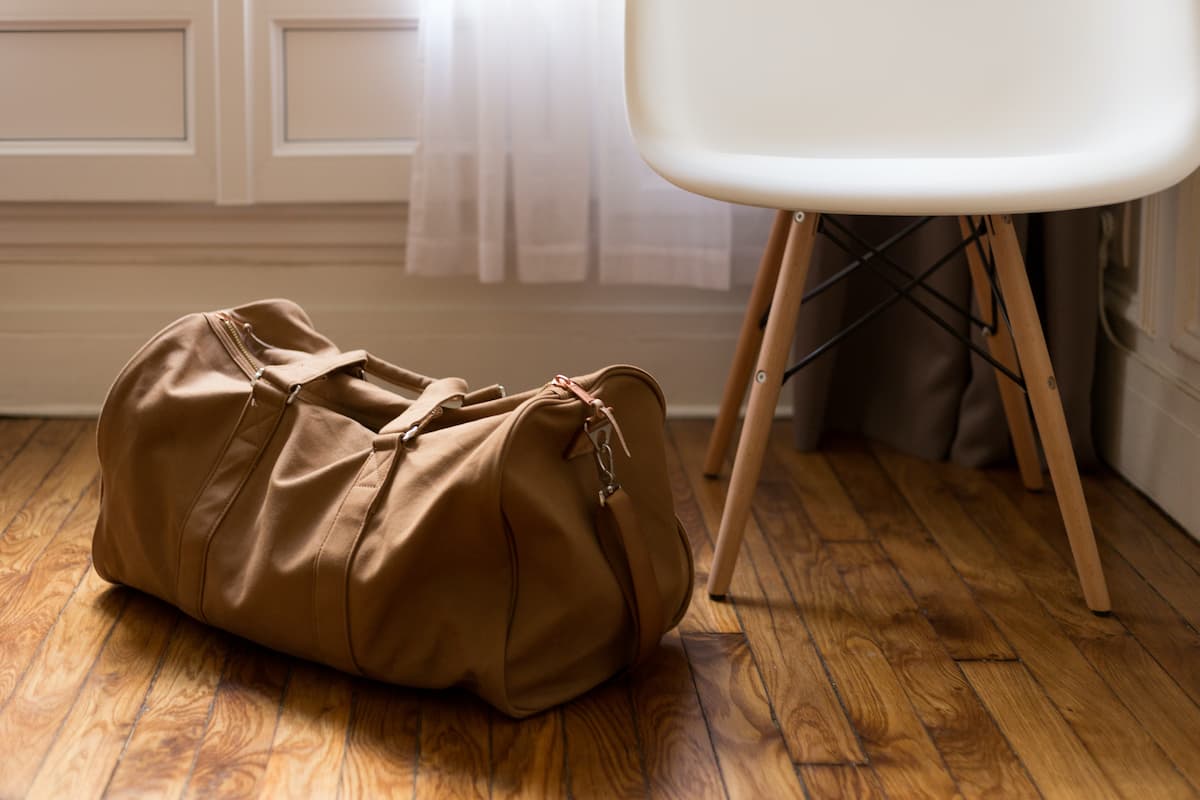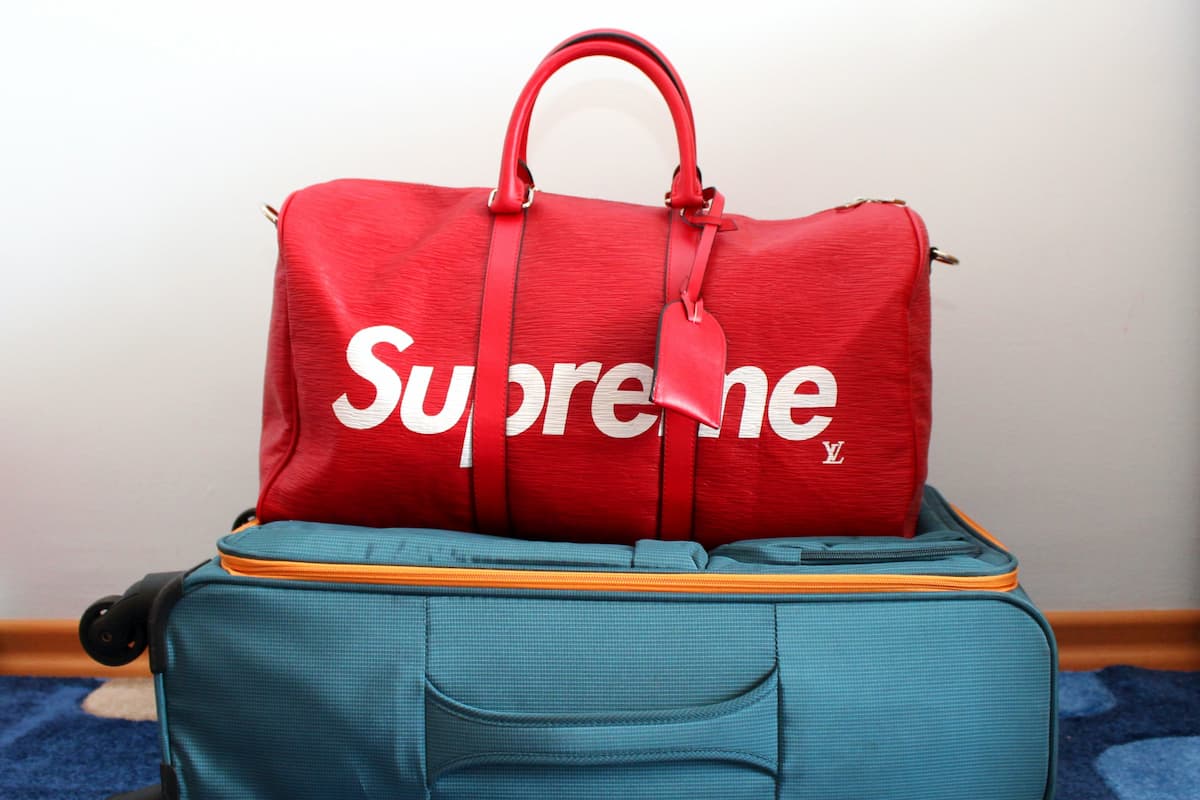How To Measure A Duffel Bag For Carry On?
Nearly all airlines have size/weight limits for carry-on bags – and most frequent flyers know the pain of gate-checking or paying for oversized or overweight hand luggage.
Many air travelers prefer soft-sided carry-on bags, like backpacks and duffels, because they weigh less and can be easier to lift into overhead bins.
However, airlines base their carry-on sizes on hard suitcases, so measuring a duffel (or even a backpack) can be challenging.
The easiest way to measure a duffel bag is to fill it first. If you aren’t ready to pack for your trip, use towels or sheets because these items will quickly bring the bag to its largest possible shape. Once it’s full, grab a ruler or tape measure and find its length, width, and height to ensure it complies with the airlines’ carry-on policies.
The following provides basic steps for measuring a duffel bag and tips for how to pack it.
Basic Steps For Measuring a Duffel Bag

Duffel bags are a convenient alternative to hard-shell suitcases, especially for short trips that don’t require a lot of items.
However, if you want to bring your duffel as a carry-on item, there are a few things to do before you head to the airport.
1. Check Airline Baggage Policies
Before you pack your duffel bag, make sure you know the baggage size and weight limits of the airline you’re flying with.
Most US airlines allow carry-on items 22 x 14 x 9 inches (56 x 36 x 23 cm) or less, including handles and wheels.
These items will be stored in the overhead compartment because they’re too large to fit under the seat.
Because some bags are shaped a bit funny, certain airlines also list their carry-on sizes in linear inches – the combined total of length + width + height.
US airlines, like Delta, limit carry-ons to 45 linear inches (114 cm).
Airlines abroad, like EasyJet or Ryanair, have different allowances for carry-on bags.
EasyJet allows bags that are 22 x 17.7 x 9.8 inches (56 x 45 x 25 cm), whereas Ryanair only allows carry-ons up to 21.6 x 15 x 7.8 inches (55 x 40 x 20 cm).
If your bag looks too big, the staff may have you prove it complies by asking you to put it in the luggage sizer at the check-in desk or gate.
2. Fill the Duffel Bag
After you’ve confirmed the sizing for your duffel bag, it’s time to get measuring.
The first thing you need to do is stuff the bag as full as it’ll go while still maintaining its shape – you don’t want the sides to bulge, as this will throw off your measurements.
(Basically, if the bag is full and you can still zip it up easily, you’re probably good.)
If you’re ready to pack for your trip, use your items to fill the bag.
If you’re just checking the size of your duffel, use sheets and/or towels because they’re a convenient size and you won’t need that many to fill it.
3. Measure the Duffel Bag
Once the duffel is full, measure the height, width, and length of the bag using a tape measure or ruler.
For length, measure along the top of the bag, as the zipper gives a more solid base to work from.
For height and width, pick one end and measure up and down (for height) and side to side (for width).
When measuring height, include any protruding handles and wheels in your calculations.
4. Measuring Cylindrical Duffel Bags
There’s a bit of debate about measuring cylindrical bags for air travel; however, it’s not as difficult as it may seem.
Airlines rely on the luggage sizer to determine whether carry-on items conform to their policies, so as long as your bag can easily slide in and out of the sizer, you’re likely good to go.
To measure a cylindrical bag, fill it, then measure the entire length of the bag along the zipper, followed by the height and width of the circular end.
When measuring the circular side, put the tape measure or ruler along the diameter (i.e., the widest part of the circle) for the most accurate dimensions.
Read Also >> How To Measure Luggage For Air Travel (5 Simple Steps)
Tips for More Accurate Measurements
1. Use a Table
Measuring a duffel bag is much easier on a raised surface like a table.
When the bag is closer to eye level, you’ll have more control over your measuring tool, and you’ll be able to get a more accurate reading.
2. Use a Cardboard Box
If you are extra conscientious and want to ensure your duffel will fit in the luggage sizer, use a cardboard box the same size.
Measure the inside of the box to confirm the dimensions, then drop in your bag and see if it fits easily.
If you don’t have the right-sized box, you can draw the measurements on a large piece of paper or cardboard and check if your duffel sits comfortably within the lines.
3. Manufacturer Measurements Are Different From Airline Sizes
Even if a company claims their bag is travel sized, you’ll still have to confirm it’s airline-approved.
For most duffel bags, the manufacturer’s measurements refer to total capacity (often stated in liters) or reflect internal dimensions and don’t typically include wheels, handles, or the thick bottom of the bag.
So, to save yourself a headache at the airport, grab a measuring tape and ignore what the product details say.
Tips For Packing a Duffel Bag

Here are some pro tips for packing your carry-on to help maximize space and minimize hassles at the airport.
1. Pack Shoes on the Bottom
If your duffel doesn’t have a separate shoe compartment, put them in plastic bags to avoid getting dirt everywhere and line them along the bottom of the bag.
Not only will the shoes help the bag keep its shape, but they’ll also take up less space when placed under other items.
2. Roll Clothes and/or Use Packing Cubes
Roll your clothes as tightly as possible to maximize space in any travel bag, placing the heaviest or bulkiest items (like sweatshirts and jeans) along the bottom with the shoes.
If you have packing cubes, use them. These handy little storage compartments help keep your clothes clean, organized, and contained, especially with limited space.
3. Keep Important Documents Accessible
If you only bring your duffel bag as carry-on, ensure your essential travel documents (like passports and boarding passes) are easily accessible.
Put them in your bag’s outside pockets or place them on top of everything else inside.
Read Also >> 12 Tips for Packing a Suitcase
Final Thoughts
Duffel bags are a convenient choice for carry-on luggage – they’re lightweight, easy to pack, and not hard to lift into an overhead bin.
Before you head to the airport, measure your duffel to ensure it’ll comply with airline baggage policies.
Fill the bag so it’s almost full, then measure the height, length, and width using a tape measure or ruler.